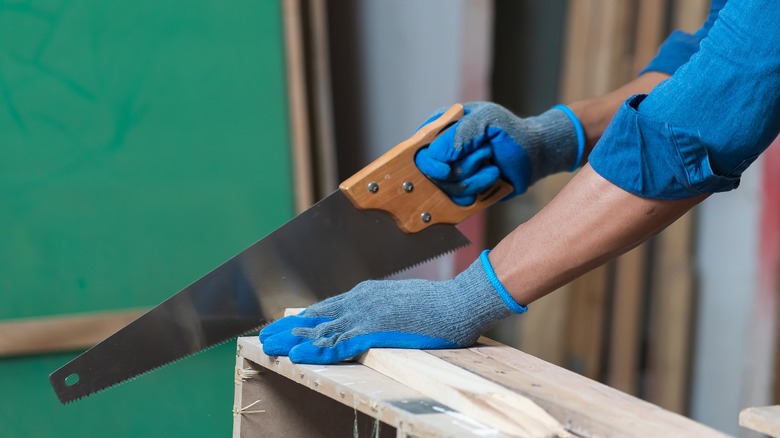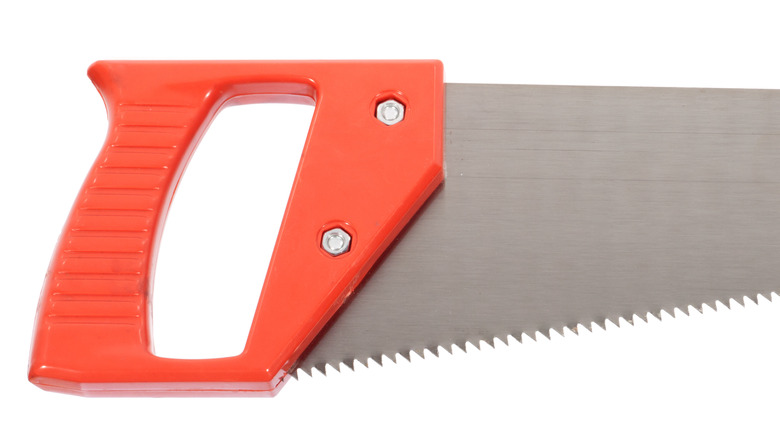This Hidden Handsaw Handle Trick May Prove Helpful During Your Next DIY Project
Saws are an important part of any tool kit — especially if you're going to be working with wood in any capacity. Though it might be surprising to know that the handsaw you've been hanging on to for so many years (or maybe just bought) could be hiding something.
It turns out that, much like power drills and many other common tools you'll find around the shop, garage, basement, etc., many handsaws are capable of doing more than just cutting. Though they can certainly still do that, too.
The secret is all in the saw's handle — but it's not anything wild like a hidden compartment. It really all comes down to the shape of the handle itself, and its relation to the saw blade. You will, of course, need a piece of wood and the saw itself to take advantage of this hidden trick, but it also helps if you have a pencil or other writing implement on-hand.
A saw that helps you cut
Many handsaw handles are designed to have two (sometimes more) angles to the spot where they connect to the blade, with one running perpendicular to the saw. As shown in the video from The Maker below, you can use those angles to your advantage by lining one of them up along the edge of the piece of wood you plan to cut.
With the handle lined up, you can then use a pencil along the flat (back) of the saw blade to trace your cut lines. And by using both angles in conjunction, you can set yourself up for either 90- or 45-degree cuts. Perfect for fitting around or inside of most corners.
Bear in mind that this trick won't work with every single type of handsaw. Most modern tooth saws and backsaws should have the necessary handle shape to accommodate tracing out your cutting angles. However, older tools and saws with incompatible grip sizes or shapes (like hacksaws or jigsaws) likely won't cut it.

